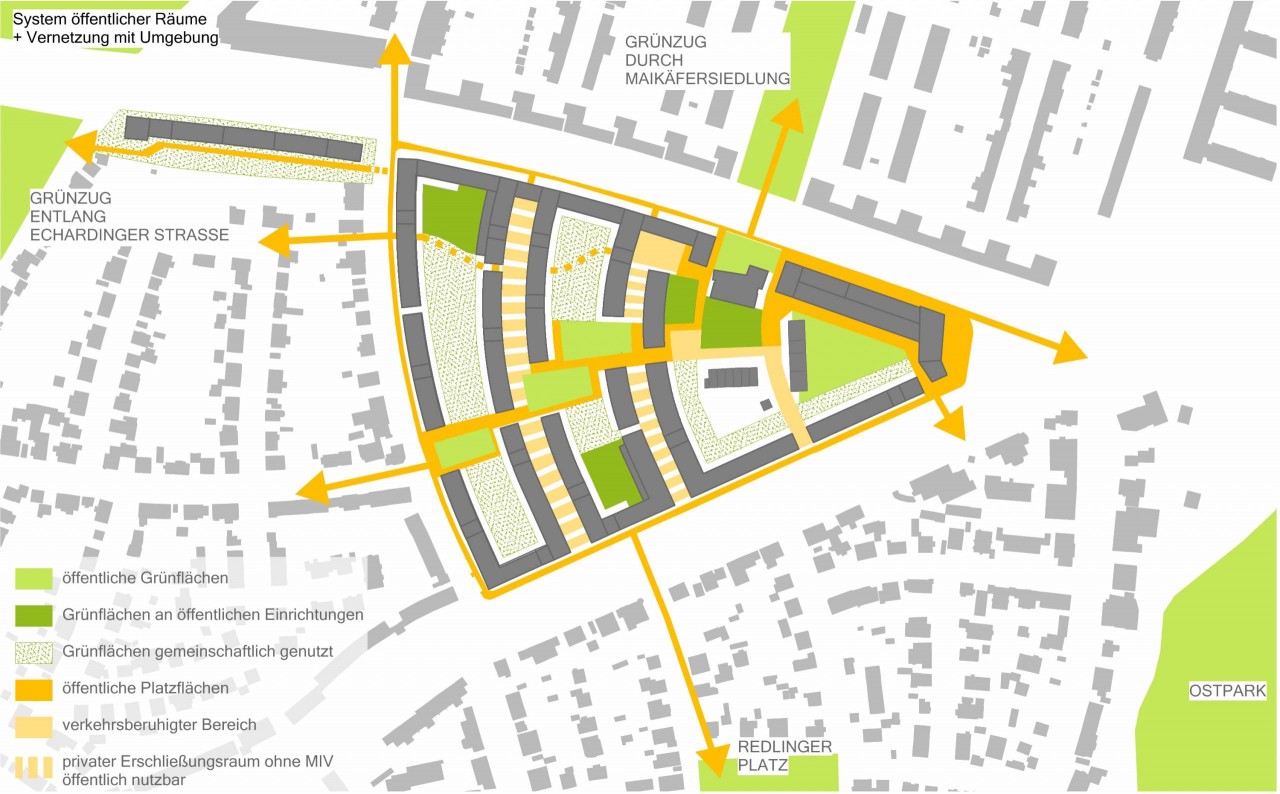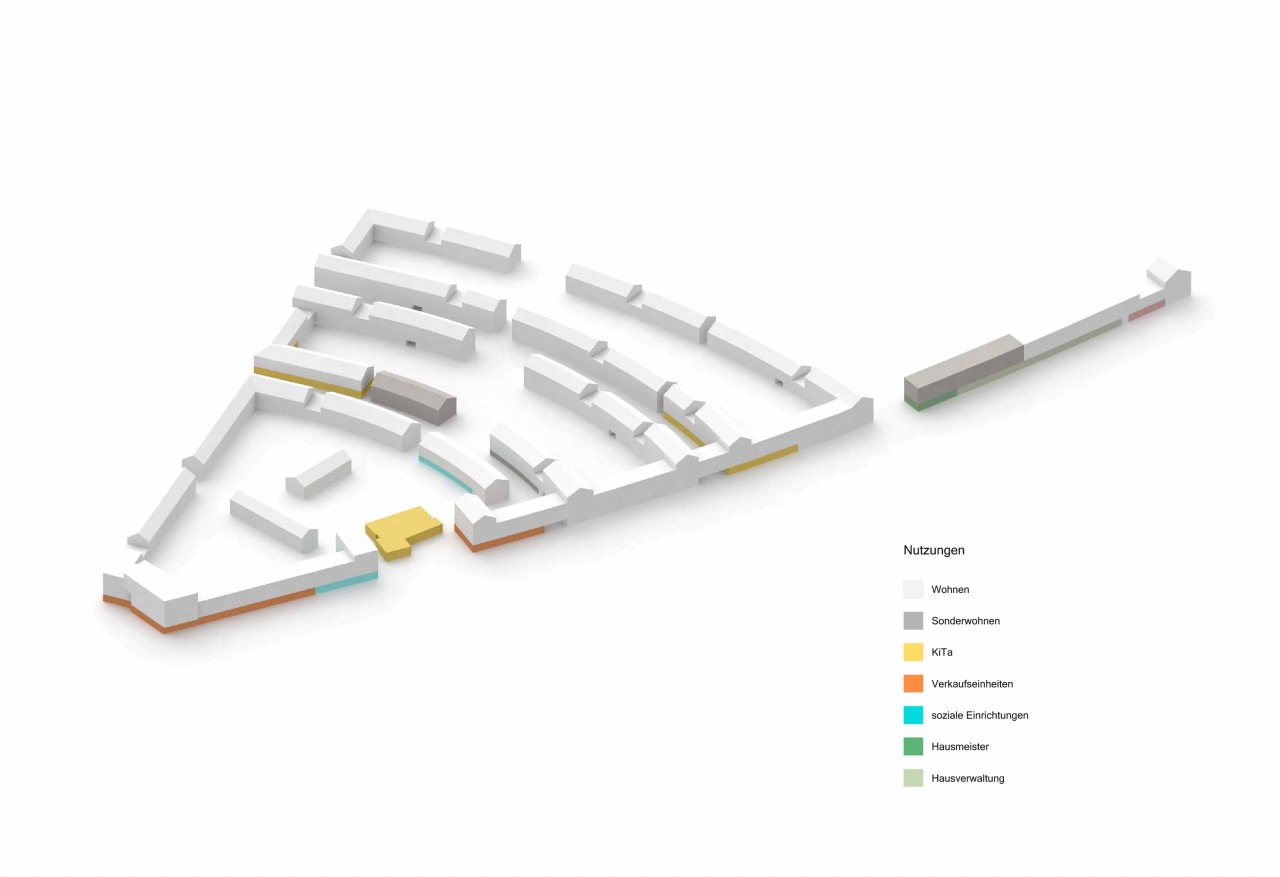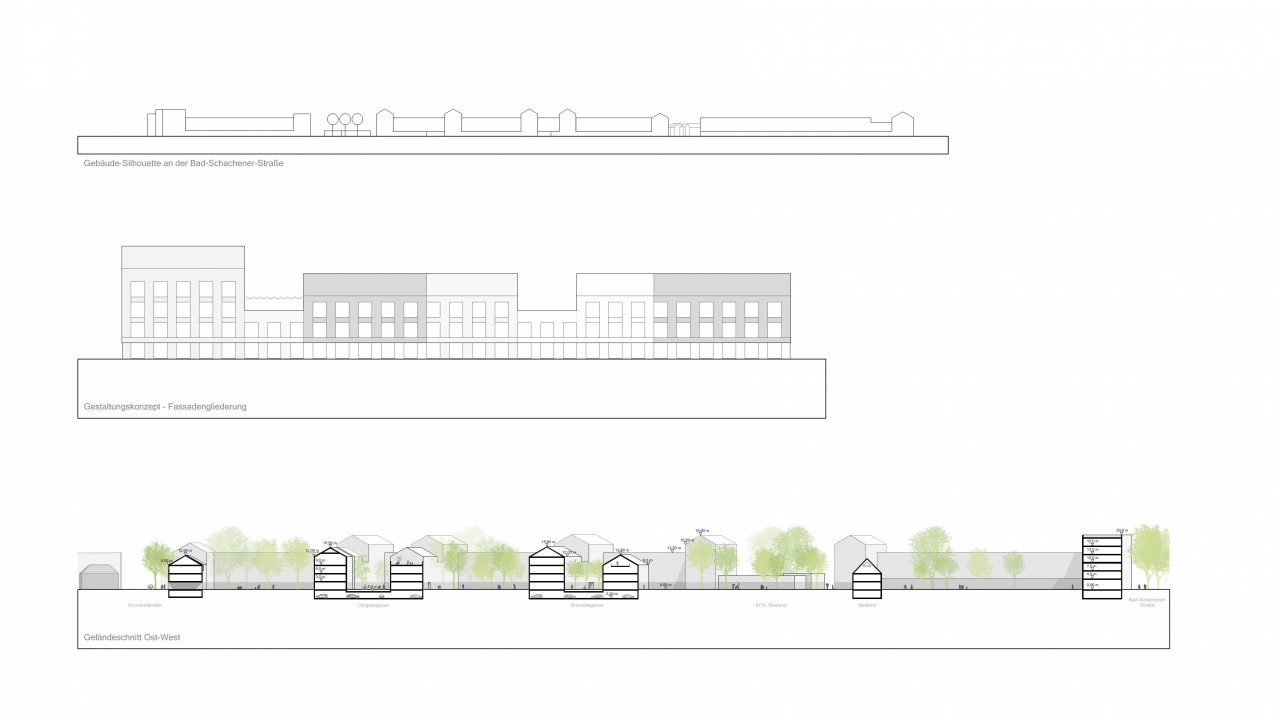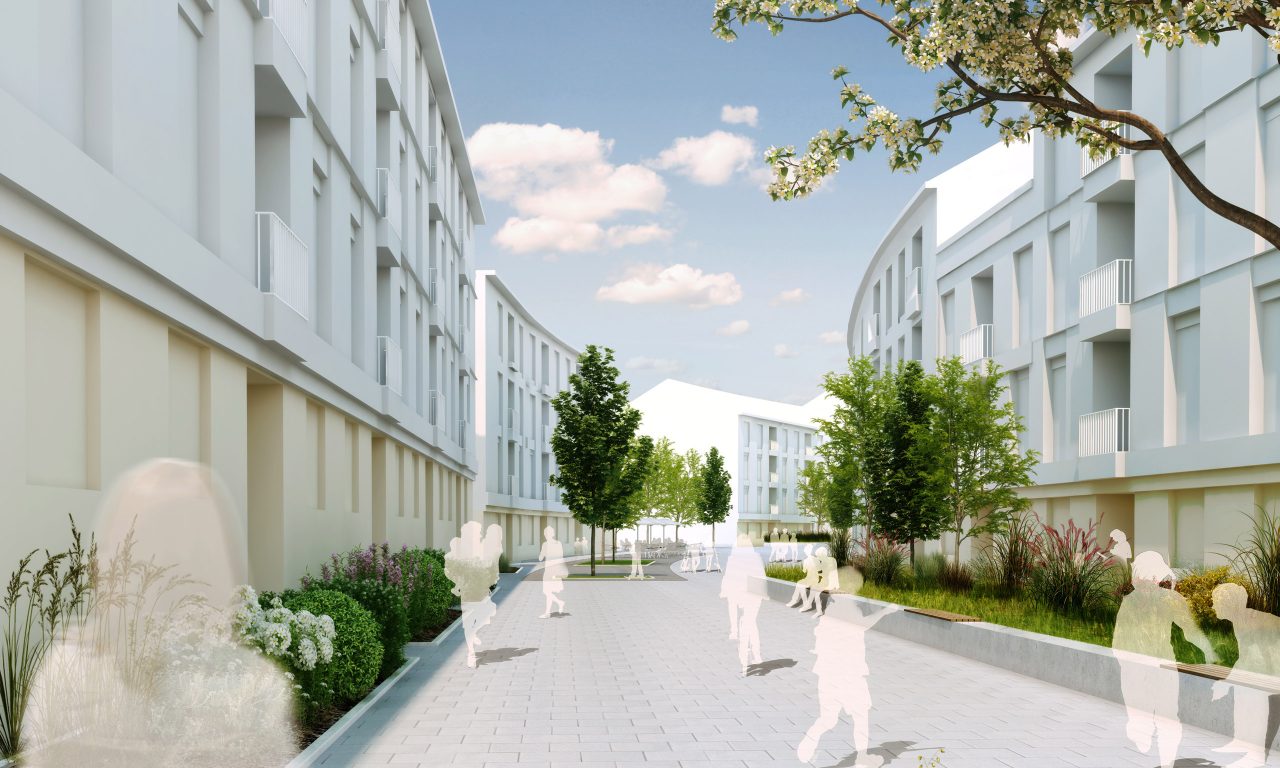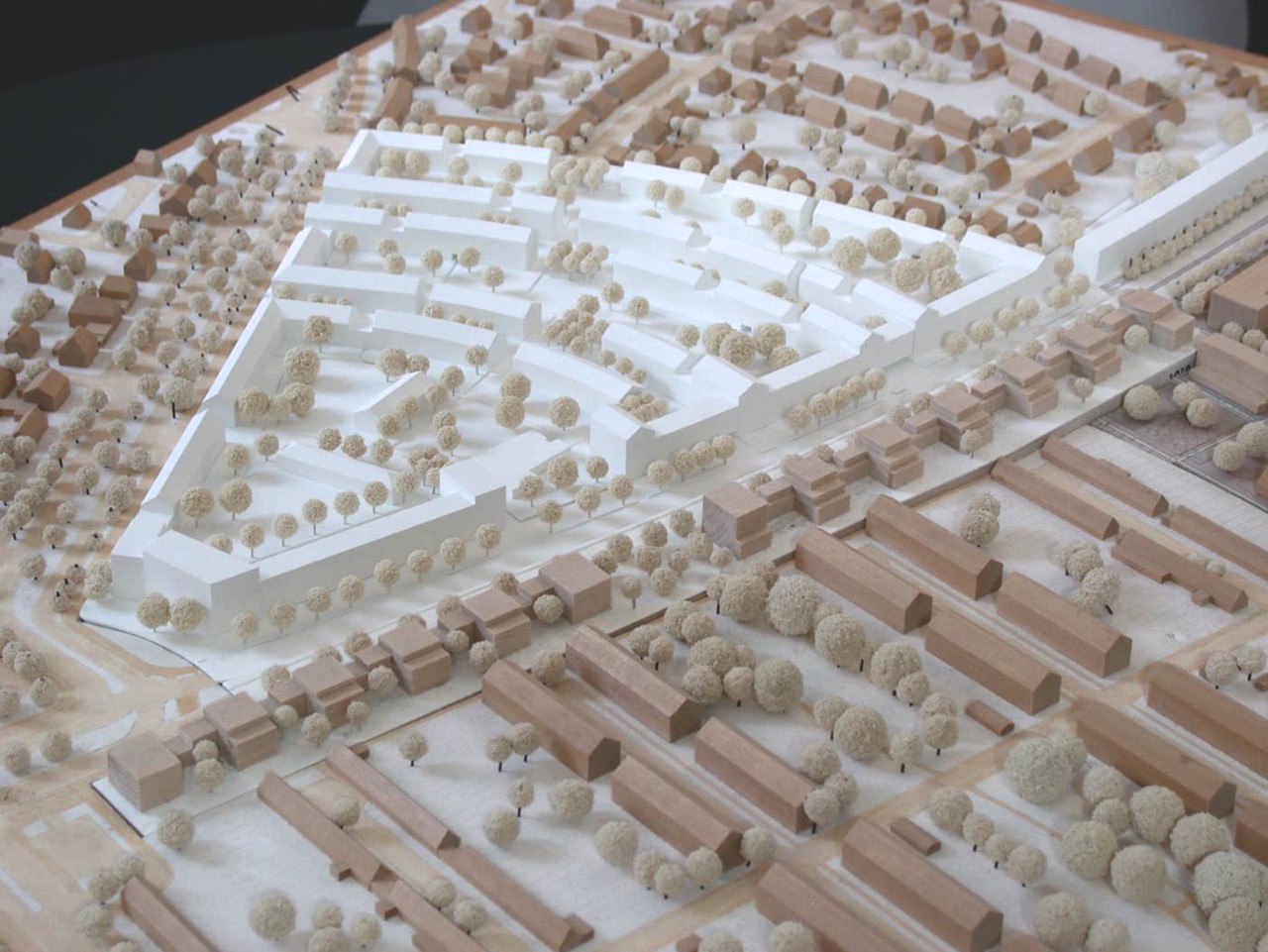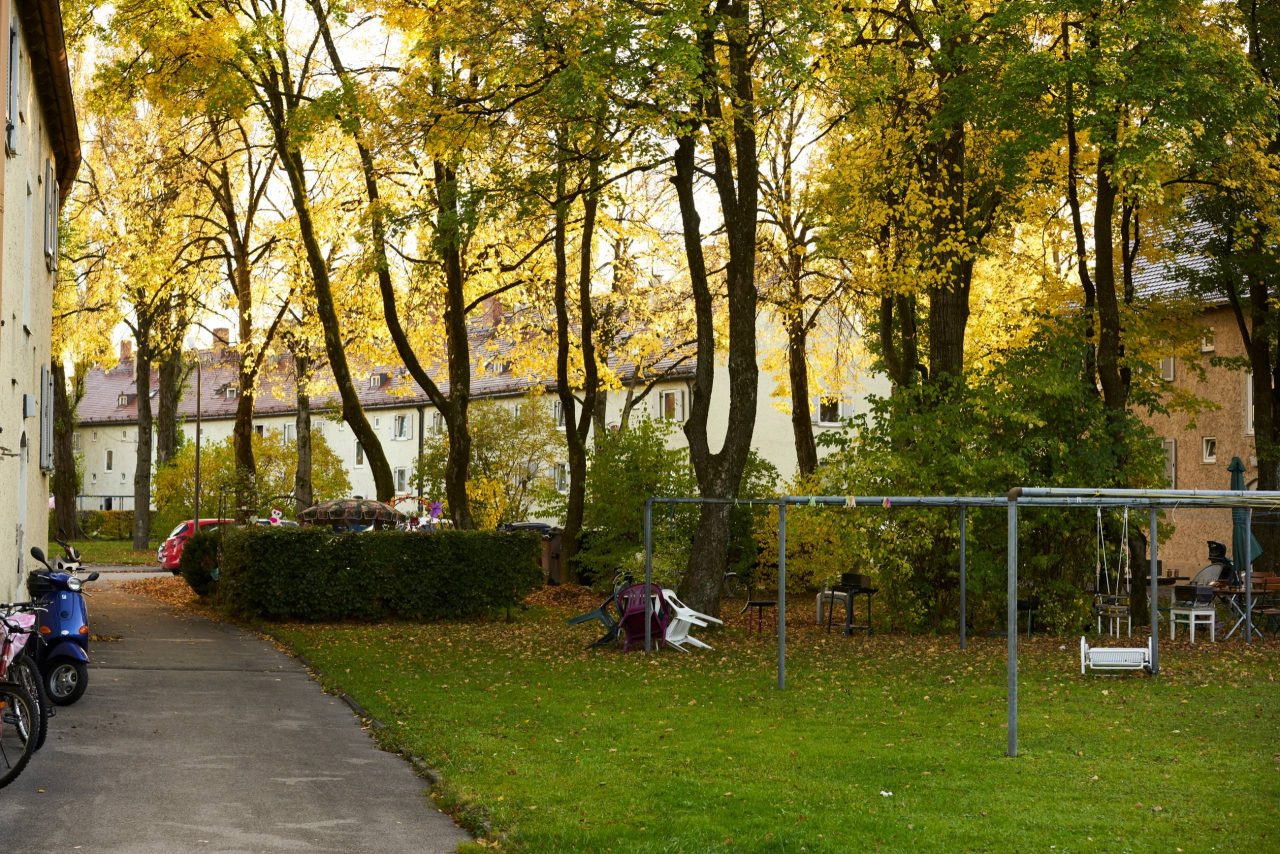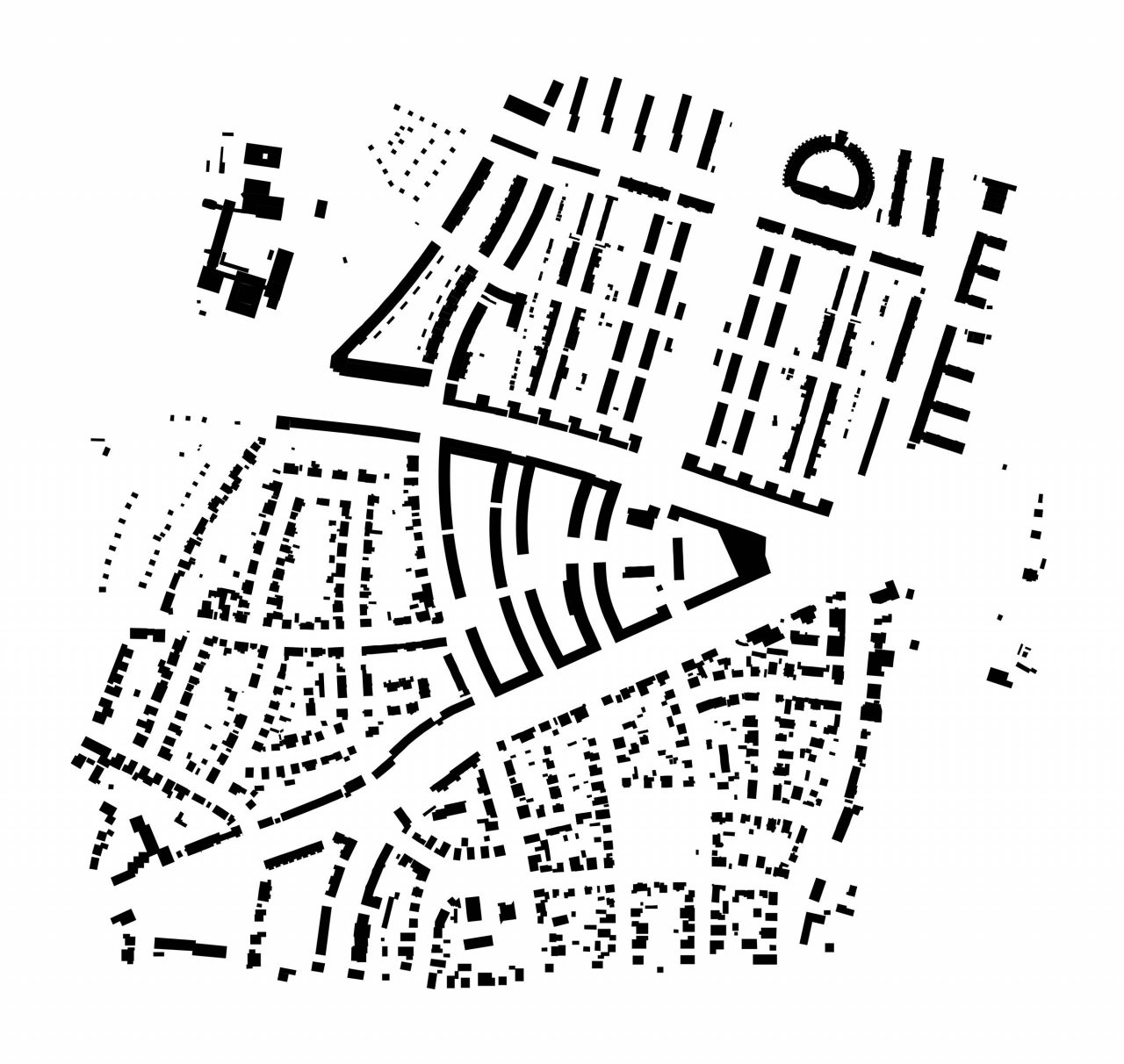
Urban development and landscape planning competition
Residential area in Haldenseestrasse in Munich
The intention is to further develop the existing qualities of the Haldenseestrasse area. Green courtyards alternate with traffic-free access roads: a successive restructuring on the old tracks. The side-effect is that this makes the building phases easy to divide up and define. A number of contemporary micro-flats on the site also reminds one of the thinking that led to the creation of the existing buildings.
The identity of the area is formed by the special open space qualities directly next to each house (the stairwells on the ground floor connect the courtyard to the road) as well as a comprehensive, consistent building structure that also receives a timelessness from the existing trees. The generous green spaces form an atmospheric link to the north side of Bad-Schachener-Strasse, the Maikäfersiedlung. A continuous internal pathway system establishes the togetherness of the area and creates a logical connection out to the surrounding parks and green axes. The generously sized public spaces are green, and private green spaces are to be found along the houses and on the roofs.
A symbolism arises from a conscious changing of roof shapes and a profiling with saddleback roofs and flat roofs along the area boundaries, and the different orientations and building depths and roof shapes enable different dwelling typologies and forms of ownership. Noise protection is mostly passive and is provided by a seamless development along the edges and building depths, which enable an orientation of the recreation rooms away from the road.
The open-space structure of the area is based on 3 basic types: “road”, “square” and “courtyard”. Since the underground garages are accessed from the surrounding streets, the whole area is just about free from individual traffic. The “road space” forms the address, is again a space for communication and informal play. A succession of public, mostly green spaces runs through the whole area and connects its internal street and courtyard spaces as well as the infrastructure facilities and creates the link with the road and green space system of the urban surroundings (Maikäfersiedlung, Echardinger Anger, Ostpark). The main focus here is on the square and the green on the east side, around which the community facilities are grouped. The courtyards, which are clearly formulated by the building structure, represent with their valuable old trees the “green capital” of the area. To preserve the generous, almost park-like character, relatively small private terrace areas supplemented by roof terraces and gardens are assigned to the ground-floor apartments. The courtyards thus contain large, contiguous green spaces that are available for use as community play and quiet zones and, if required, for community gardens. The boundaries between “public” and so-called “private” green spaces are practically abolished.
Our wish is flexibility in density – more living than desired is possible, which leads to design possibilities in object planning. The size of the area would suggest a local energy network. District heating is supplemented by energy harvesting (electricity and heat) on the saddleback roofs as well as by intelligent internal networking and storage. Electrical storage, for example, could be effected by electromobility and electricity filling stations for car-sharing groups and in the underground garages, and summer peak heat levels could be used for air-conditioning in the shops.
Good public access is augmented by a mobility concept, which means that the required number of parking spaces is open to discussion during the development planning procedure.

excerpt of the jury’s statement:
“The urban-planning concept of the design is derived by the architects as it were in accordance with the laws of nature from the history of the place and the existing buildings. The district is divided into large crescents that follow the footprint of the existing housing estate. The raising of the urban density prescribed in the regional planning programme is achieved largely by deeper buildings – a perfectly plausible development of the estate. With the zoning of the building site according to the classical principle ‘street – apartment – courtyard’, it is possible to combine the housing-estate typology with the formation rule of classical European urban districts. In future, the place will not be characterised by housing rows surrounded on all sides by open spaces, but rather by rows of buildings that line a curved, interesting street. A convincing urbanistic concept: every dwelling will receive an address in well-proportioned public space, every dwelling will participate in a generous and green inner courtyard. The simple clarity of the district’s layout is equalled by its viability, which will prove itself in the long-term implementation process. The architects’ decision to place the underground garages consistently under the buildings and the streets, which are sealed anyway, makes it possible to preserve a large number of existing trees.
The clear urban order is opened up by a series of public green spaces, which are intended to create an open-space connection between Krumbadstrasse and the underground railway station Michaelibad. …”
Project data
Location
Haldenseestrasse, Bad-Schachener-Strasse, Munich
with Lex-Kerfers Landschaftsarchitekten, Emling
Client
GWG – Städtische Wohnungsgesellschaft München mbH (municipal housing society)
Architectural service
Competition prize group 2015, 1. Prize 2016, revision 2016, Development Plan, Statute Grant 2019, Design Guide
Competition team
Frank Feuchtenbeiner, Andrea Frank, Johanna Lölhöffel, Maria-Magdalena Renker
Project team
Andrea Frank, Ivaylo Galabov, Johanna Lölhöffel, Maria-Magdalena Renker (project manager), Simone Schiller,

